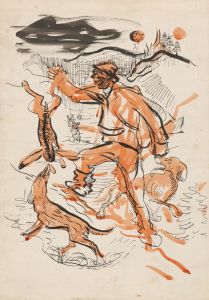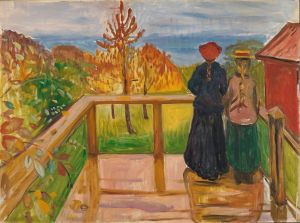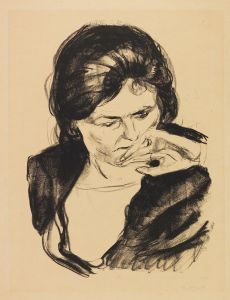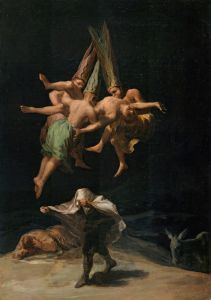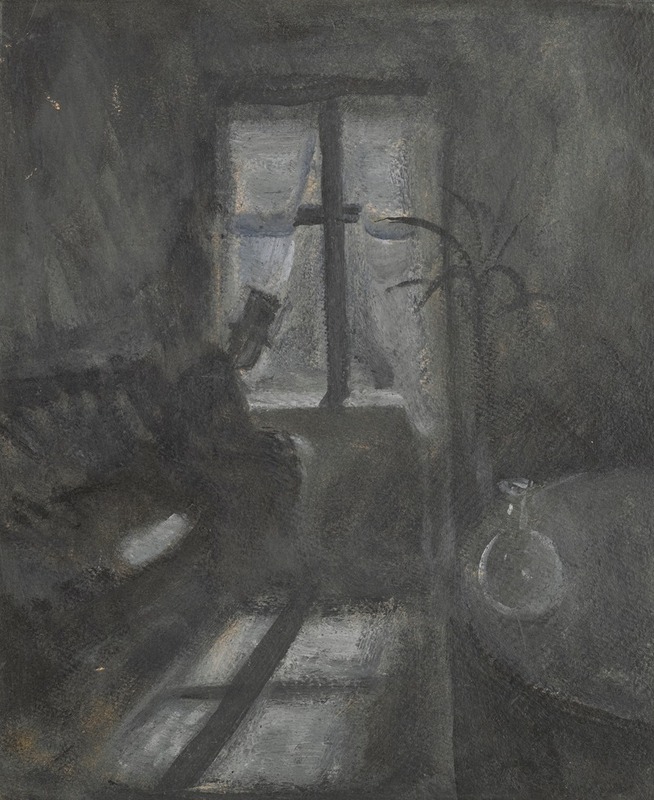
Natt I Saint-Cloud
A hand-painted replica of Edvard Munch’s masterpiece Natt I Saint-Cloud, meticulously crafted by professional artists to capture the true essence of the original. Each piece is created with museum-quality canvas and rare mineral pigments, carefully painted by experienced artists with delicate brushstrokes and rich, layered colors to perfectly recreate the texture of the original artwork. Unlike machine-printed reproductions, this hand-painted version brings the painting to life, infused with the artist’s emotions and skill in every stroke. Whether for personal collection or home decoration, it instantly elevates the artistic atmosphere of any space.
Edvard Munch's painting "Natt i Saint-Cloud" (translated as "Night in Saint-Cloud") is a significant work in the oeuvre of the Norwegian artist, known for his profound influence on modern art and his role in the development of Expressionism. Painted in 1890, this artwork marks a pivotal moment in Munch's career, reflecting both personal and artistic transitions.
"Natt i Saint-Cloud" was created during Munch's stay in Saint-Cloud, a suburb of Paris, where he lived for a period in the late 19th century. This time in Paris was crucial for Munch, as it exposed him to various avant-garde movements and artists who were exploring new ways of expression. The painting is often noted for its atmospheric quality and its exploration of mood, which would become a hallmark of Munch's later works.
The painting depicts a solitary figure, believed to be Munch himself, sitting in a dimly lit room, gazing out of a window. The room is enveloped in shades of blue and green, creating a somber and introspective atmosphere. The use of color and light in "Natt i Saint-Cloud" is particularly noteworthy; Munch employs a limited palette to evoke a sense of melancholy and contemplation. This approach to color and mood foreshadows his later, more famous works, such as "The Scream."
Munch's time in Paris was marked by personal struggles and a deepening of his artistic vision. "Natt i Saint-Cloud" reflects these experiences, capturing a moment of introspection and solitude. The painting's composition, with its emphasis on the interior space and the figure's contemplative pose, suggests themes of isolation and existential reflection. These themes would continue to resonate throughout Munch's career, as he explored the complexities of human emotion and experience.
The influence of Symbolism is evident in "Natt i Saint-Cloud," as Munch was inspired by the Symbolist movement during his time in Paris. Symbolism sought to express the emotional and spiritual aspects of human life, often through dreamlike and evocative imagery. Munch's work from this period demonstrates his engagement with these ideas, as he sought to convey the inner workings of the mind and the soul through his art.
"Natt i Saint-Cloud" is also significant for its technical execution. Munch's brushwork is loose and expressive, contributing to the painting's overall mood and atmosphere. This technique would become a defining characteristic of his style, allowing him to convey emotion and psychological depth with great intensity.
Today, "Natt i Saint-Cloud" is recognized as an important early work in Munch's career, illustrating his transition from traditional approaches to a more modern, expressive style. It serves as a precursor to his later masterpieces and highlights his ability to capture the complexities of the human psyche. The painting remains an essential piece for understanding Munch's development as an artist and his contribution to the evolution of modern art.






